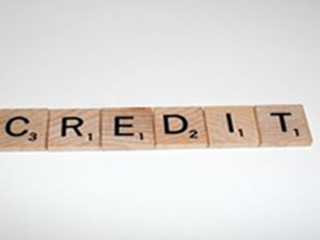
All credit card lenders can cut customers’ credit card limits at any time. Despite this, having a credit card limit suddenly cut can cause stress and anxiety for borrowers but, fortunately, there are some steps customers can take if their credit card limit has been reduced unexpectedly.
Customers who receive correspondence from their credit card provider telling them their credit card limit is set to be cut should in the first instance contact their provider to find out more information. The provider may be able to provide information about why they have decided to reduce the credit limit. In some cases, customers may also be able to appeal the cut, for example if the credit card company has decided to cut the limit due to concerns about a reduction in the customer’s monthly income, if the customer is able to provide payslips proving their income has remained the same or increased, they may be able to keep their original limit.
For customers unable to appeal the limit reduction, they may be able to get the credit card limit they require with a new card. Those considering applying for a new credit card should, however, first check their credit score, which can be done online for free here, to see the likelihood of being accepted for a new credit card and the potential limit they could get. Normally, the higher the credit score, the more willing a credit card provider will be to offer a higher limit.
Borrowers who have a good credit score and who have an outstanding balance on their existing credit card may want to consider applying for a 0% balance transfer card. This card will enable them to transfer their existing balance to the new card and have an interest-free period in which to repay the balance. Those considering this option should be aware that some 0% balance transfer cards charge a fee to transfer balances and this will be added to the debt on the credit card.
Those who do not have a large outstanding balance may want to consider a 0% purchase credit card instead. These cards offer a period in which customers can make purchases and not have to pay any interest. Ideally, those using a 0% purchase credit card should repay the balance before the interest-free period ends to avoid having interest added to the balance.
Another option borrowers could consider is a personal loan. This may be a better option for those looking to borrow a large amount, for example £5,000 to £10,000, to pay for a specific purchase such as a holiday or a new bathroom. Again, borrowers considering this option should check their credit score first as this will impact the likelihood of their loan application being approved and the interest rate they are offered.
For those looking to borrow a larger amount, for example £20,000 or more, a secured loan could be an option. These loans allow consumers to borrow large amounts as, unlike personal loans, they require the borrower to put an asset against the loan, normally their home. Those considering a secured loan should keep in mind that if they fail to keep up with repayments it could result in them losing their home – as such, those considering this option should think carefully before taking out the loan. For more information about these loans, visit our secured loans page.
Consumers with a poor credit score will normally find it harder to borrow money and they will often be offered a lower credit limit than those with a good credit score. As such, those with a poor credit score may be better sticking with the current credit card despite the limit being cut. Alternatively, there are credit repair cards available that are aimed specifically at those with poor credit scores. These credit cards usually charge a much higher interest rate than standard credit cards, so those considering one of these cards should only borrow what they can afford to repay each month to avoid falling further into debt.
Instead, those with a poor credit score may want to work on building up their credit score before applying to have their credit limit increased again or applying for a new credit card. Our guide, how to improve your credit score, provides tips on how borrowers can increase their credit scores.
If you are struggling to repay debt, you should consider speaking to a free debt advice charity such as Citizen Advice, which will be able to provide help and support on how to manage and clear your debt.
There are a number of reasons why a credit card lender will decide to cut credit limits, and these include:
Disclaimer: This information is intended solely to provide guidance and is not financial advice. Moneyfacts will not be liable for any loss arising from your use or reliance on this information. If you are in any doubt, Moneyfacts recommends you obtain independent financial advice.